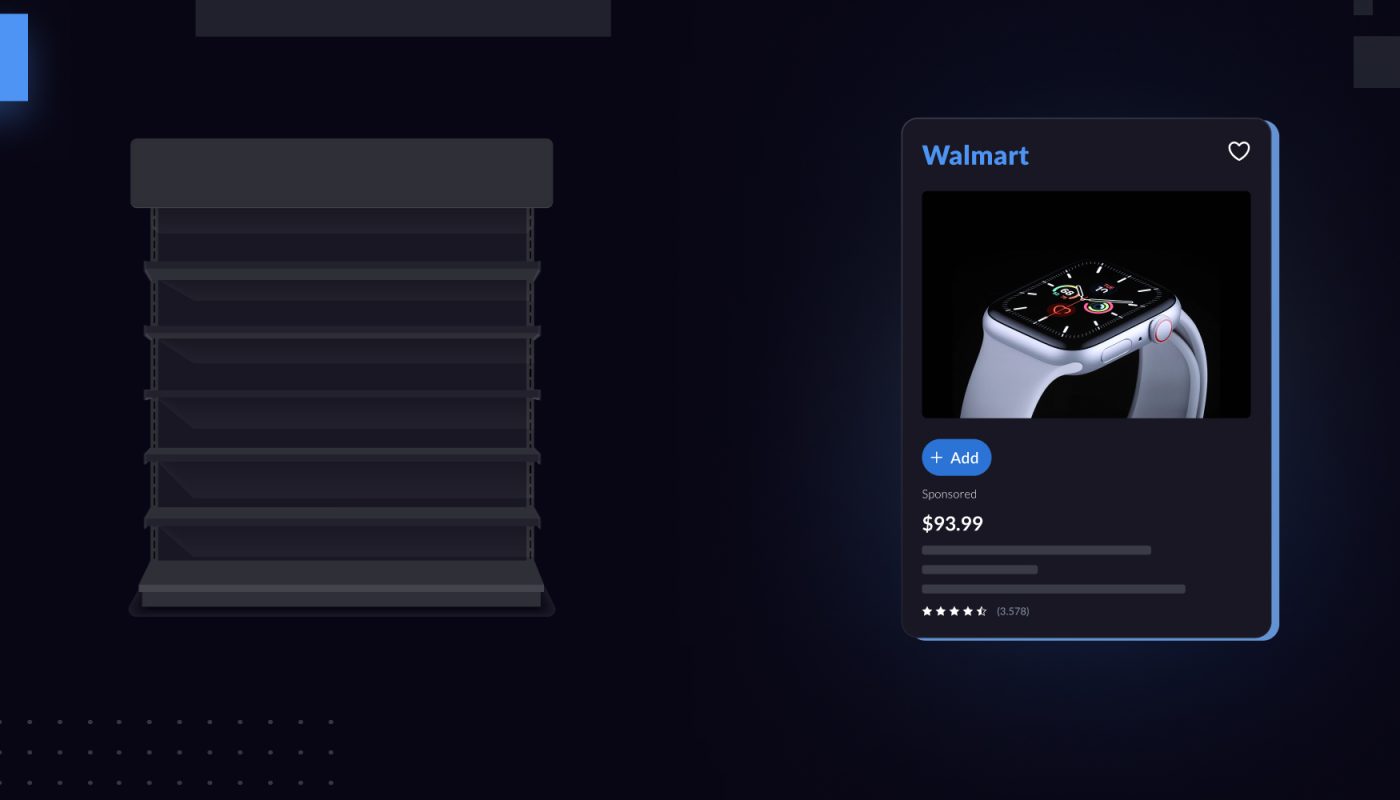Are your online ads impacting in-store sales? Any brand that sells products in physical stores has probably spent much of the last decade wondering this. But it is a much more difficult question to answer than you might expect.
First of all, few retailers have the data to directly connect online ads to physical purchases. And those that do are not always the most transparent about it.
The good news: Walmart, the biggest retailer in the U.S., is changing that. Now, in-store attribution is available in beta to brands that sell products in Walmart’s physical stores.
This means that, if you run a Sponsored Search ad on Walmart Connect, Walmart’s ad network, Walmart can attribute sales to it across physical and digital channels.
Walmart Connect maps out all of the shoppers who interacted with your digital ad, and then tracks everything—their subsequent online and in-store purchases.
The new program is called Store Attribution for Sponsored Search. And it’s a game changer for brands that want to create a holistic view of their shopper journeys.
How does connecting in-store and digital sales work?
The specific strategy used to unify an in-store purchase with a digital ad click depends on the retailer.
Here’s an oversimplified example of how it could work. If a customer uses the same credit card in a physical store as they do online, their actions on both channels can be tied together.
Walmart specifically benefits from a subscription service, Walmart+, that can more accurately connect shopper behaviors. Advertisers can see that the same shopper who was logged into Walmart.com also bought several of their items in a physical store.
Walmart+ subscribers also get features like scanning products in store, which encourage these digital and physical connections.
For the really advanced brands and agencies, Walmart Luminate offers even more granular insights. You can see what else was in the basket of those in-store and digital shoppers, for instance.
What kinds of in-store attribution can you get from Walmart?
If you sell in physical stores, Walmart Connect will now add new metric columns to its existing reports. These columns allow you to track:
- In-store Advertised Sales: If a shopper directly clicks an ad for a product that they later buy, then these are counted as “Advertised Sales.”
- In-store Other Sales: These are in-stores halo sales. They happen after a shopper clicks an ad for a product in your brand, but not the exact product they ended up buying.
- In-store Attributed Sales: This is the combination of Advertised and Other sales. It essentially captures all of your ad-attributable in-store sales.
What about the attribution window? There’s a lot we still don’t know about how long it takes a shopper to buy a product in store. Right now, Walmart Connect is beta testing a few different attribution windows: 3 days, 14 days, and 30 days.
The 30-day window is especially notable, since it can show a longer-term impact of your campaigns than the typical attribution window.
So why do in-store sales matter? At Intentwise, we think this new feature is a big deal. That’s because in-store attribution can help you put your Walmart Connect campaigns into context.
If your ad campaigns are driving a bunch of in-store sales, for instance, suddenly a mediocre campaign might look pretty good. Your ROAS might go up. And you’ll realize that you have a sharper portrait of your performance than before.
Let’s say you’re an agency, and you want to continue to offer your clients the most cutting-edge insights around.
You can now create a simple chart showing the impacts that one ad campaign had on both digital and physical sales—and how much the ad campaign drove growth in each channel.
These are the deep insights that make agencies stand out in the pack. And now, it’s yours for the taking.
What does in-store attribution mean for the shopper journey?
You probably already know that the ability to tie together digital and in-store signals is one of the key differentiators of Walmart Connect. The new Store Attribution for Sponsored Search just drives home that value-add of Walmart Connect.
It is also part of a bigger story we at Intentwise have been tracking. Basically: All of these e-commerce platforms, from Amazon to Walmart Connect, are investing more in giving you a holistic portrait of the shopper journey.
Amazon Marketing Cloud now lets you see how your 1P shoppers overlap with Amazon, for instance. The new Walmart Connect update means it’s now very easy to connect two other key parts of the shopper journey—in-store and digital.
For brands and agencies, this means you’re getting more data than ever from these platforms. Right now, your focus should be on making the most of it. To stand out, be sure you are finding the opportunities in this new flood of data.
Find the campaigns, the products, and the channels that are working well for you—and then double down.
Want to learn more about leveraging Walmart Connect? Don’t forget to download our free whitepaper on the best practices for Walmart’s ad platform.








